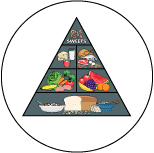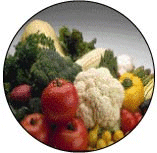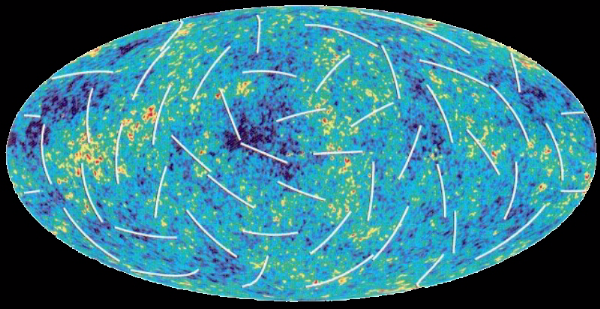The Heart Healthy Lifestyle Program -- Dean Ornish, MD.
Now Playing: 10% Fatty Foods Improves Your Health



Ornish Lifestyle Program
The Programs from Web Md. http://www.webmd.com/content/pages/9/3068_9408.htm
What It Is
Unlike other diet books that make big promises, Eat More, Weigh Less, by Dean Ornish, MD, soft-pedals the health claims for this diet for the masses, adapted from his regimen to reverse heart disease. Ornish is well known in the medical community because of his success in reversing blockages to the heart, once thought impossible without surgery or drugs. Ornish also runs his own health and diet site here at WebMD which can give you additional details about his plan.
Unlike other books that are full of scientific-sounding theories and explanations without clinical studies to back them up, Ornish's explanations are simple and well supported. His main point is that eating a high-fiber, low-fat vegetarian diet will not only help you stay healthy, or get you there, but also will help you lose weight.
This is accomplished, according to Ornish, by a combination of diet and exercise that allows the body's fat-burning mechanism to work most effectively.
What You Can Eat
Ornish counsels that we will find success not by restricting calories, but by watching the ones we eat. He breaks this down into foods that should be eaten all of the time, some of the time, and none of the time.
The following can be eaten whenever you are hungry, until you are full:
These should be eaten in moderation:
Nonfat dairy products -- skim milk, nonfat yogurt, nonfat cheeses, nonfat sour cream, and egg whites
Nonfat or very low-fat commercially available products --from Life Choice frozen dinners to Haagen-Dazs frozen yogurt bars and Entenmann's fat-free desserts (but if sugar is among the first few ingredients listed, put it back on the shelf)
These should be avoided:
Meat of all kinds -- red and white, fish and fowl (if we can't give up meat, we should at least eat as little as possible)
Oils and oil-containing products, such as margarine and most salad dressings
Avocados
Olives
Nuts and seeds
Dairy products (other than the nonfat ones above)
Sugar and simple sugar derivatives -- honey, molasses, corn syrup, and high-fructose syrup
Alcohol
Anything commercially prepared that has more than two grams of fat per serving
That's it. If you stick to this plan, you will meet Ornish's recommendation of less than 10% of your calories from fat, without the need to count fat grams or calories. Ornish suggests eating a lot of little meals because this diet makes you feel hungry more often. You will feel full faster, and you'll eat more food without increasing the number of calories.
Ornish's regimen is more than mere diet, he claims. He is a stickler about incorporating at least 30 minutes of moderate exercise a day, or an hour three times a week, and using some kind of stress-management technique, which might include meditation, massage, psychotherapy, or yoga.
===================================================
How It Works
Ornish suggests that our metabolism was set back in Fred Flintstone's era, when we didn't know where our next meal was coming from and there were times when little food was available. The body naturally wanted to hang onto all the energy it could and would try to store any extra energy as fat. Nowadays, most of us have almost continuous access to food, but our bodies haven't adapted to this new way of living.
Because the rate at which you are burning calories can decrease when you consume fewer calories, you may hit a plateau soon after you began a new, lower-calorie diet. For most of us, the pounds seem to melt away for a delightful week or two, but then that scale doesn't budge. Our weight stays the same, sometimes for a week, sometimes much longer.
But Ornish argues that with this eat-all-you-want, eat-as-often-as-you-are-hungry routine, your metabolism stays the same, or better yet, even increases. The high-fiber content also slows down the absorption of food into the digestive system, so you feel full longer with small portions than you would eating calorie-restricted small portions. The complex carbohydrates don't cause your blood sugar, the level of glucose in the blood, to yo-yo. It remains more stable, and so do you.
Ornish gives more than a passing nod to physical activity, encouraging long, slow exercise that uses body fat as fuel. Moderate exercise done on a regular basis revs up your resting metabolism, while some have suggested that short periods of intense exercise decrease metabolism.
Although he doesn't claim that meditation will make the pounds dissolve, his regimen incorporates it as a way of quieting your mind, increasing self-awareness, and coping with stress. He calls it food for the soul. "When your soul is fed, you have less need to overeat," he writes in Eat More, Weigh Less. "When you directly experience the fullness of life, then you have less need to fill the void with food."
----------------------------------------------------------------------------------------------
What the Experts Say
Mostly, Ornish gets kudos from the medical community for his highly restricted diet and healthy lifestyle routine. His documented studies showing a reversal of coronary blockage are indeed impressive. Neal Barnard, MD, president of the Physicians Committee for Responsible Medicine, says: "His diet is one of the only popular diet plans that is firmly rooted in science. It not only brings weight loss without counting calories, but it also brings good overall health. It reverses heart disease, cuts the risk of cancer, makes diabetes and hypertension more manageable, and sometimes even makes them go away."
The drawback is that the plan requires learning completely new eating habits, which many consider drastic. Barnard, the author of Food for Life and several other books on health, adds, "But after the first week or two, the plan becomes self-rewarding, because the weight loss is virtually automatic. People have better energy and they just want to stick to it."
On the other hand, Robert H. Eckel, MD, chair of the nutrition committee of the American Heart Association and a professor at the University of Colorado Health Sciences Center, is doubtful. He suggests that only the most committed will stick to Ornish's routine: "Because it is so rigid and doesn't allow a lot of food choices for those used to the Western diet, not many people will stay on it for the long term. Many people get tired of eating food with such a low fat content."
Frank Hu, MD, PhD, assistant professor of medicine at the Harvard School of Public Health, is critical of how severely fat is limited on the diet. "The data from numerous studies show that it is the type of fat, rather than the total amount, which is related to cardiovascular health," he says. "Polyunsaturated and monounsaturated oils actually protect against cardiovascular incidents, but Ornish doesn't distinguish the good fats from the bad fats -- such as trans fats, which come from margarine sticks and cookies and crackers, and animal fats." For example, Hu says, Ornish advocates limiting the consumption of fish and nuts, and Hu adds, "There is strong evidence that the fat in them is protective against coronary heart disease in both epidemiological studies and clinical trials."
Food for Thought
Vegetarians, or those willing to become so for the long term, may be the only dieters who will find success with this plan. The recommendation to eat smaller, more frequent meals requires that dieters change their eating schedules, which could be difficult for some. Other than that, this plan has what it takes to lose weight and keep it off, and receives high marks from nutrition experts.
Posted by philcutrara1
at 11:28 AM EDT
Updated: Wednesday, 6 December 2006 12:50 PM EST




 4th Day Niacin Flush on Skin
4th Day Niacin Flush on Skin


